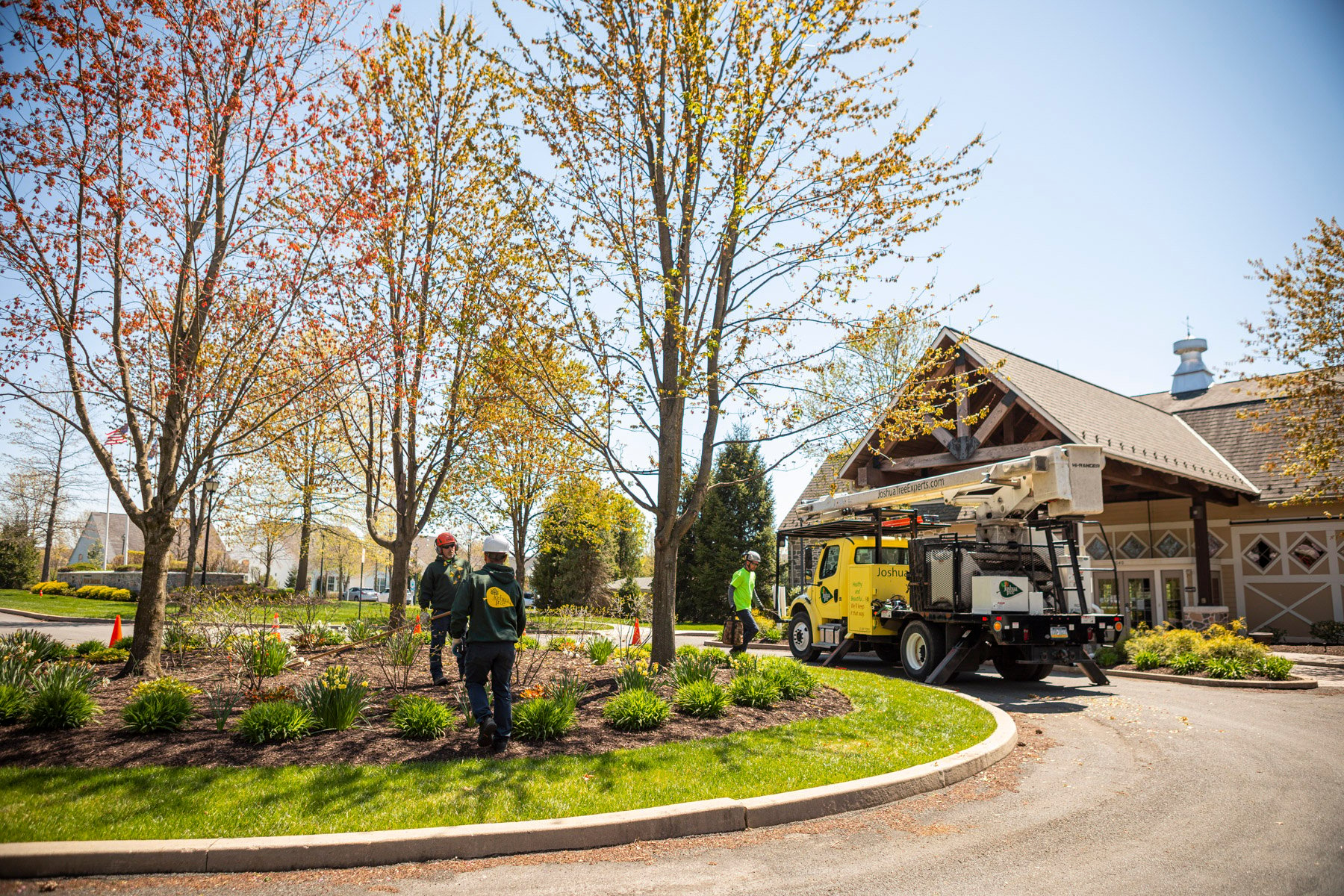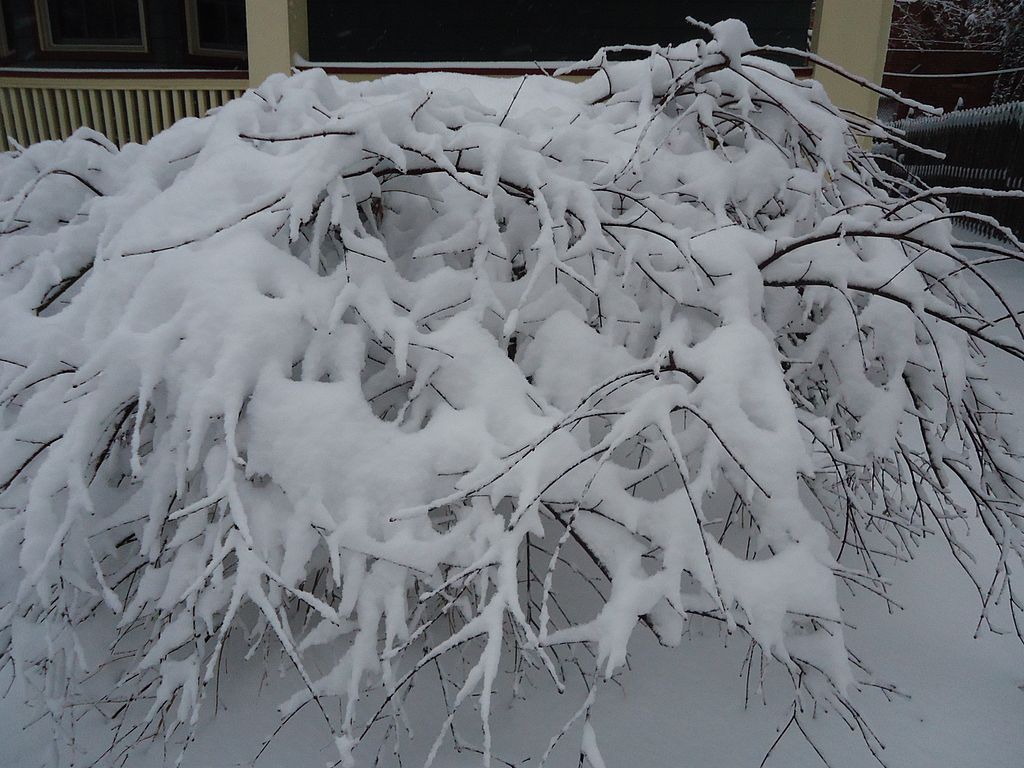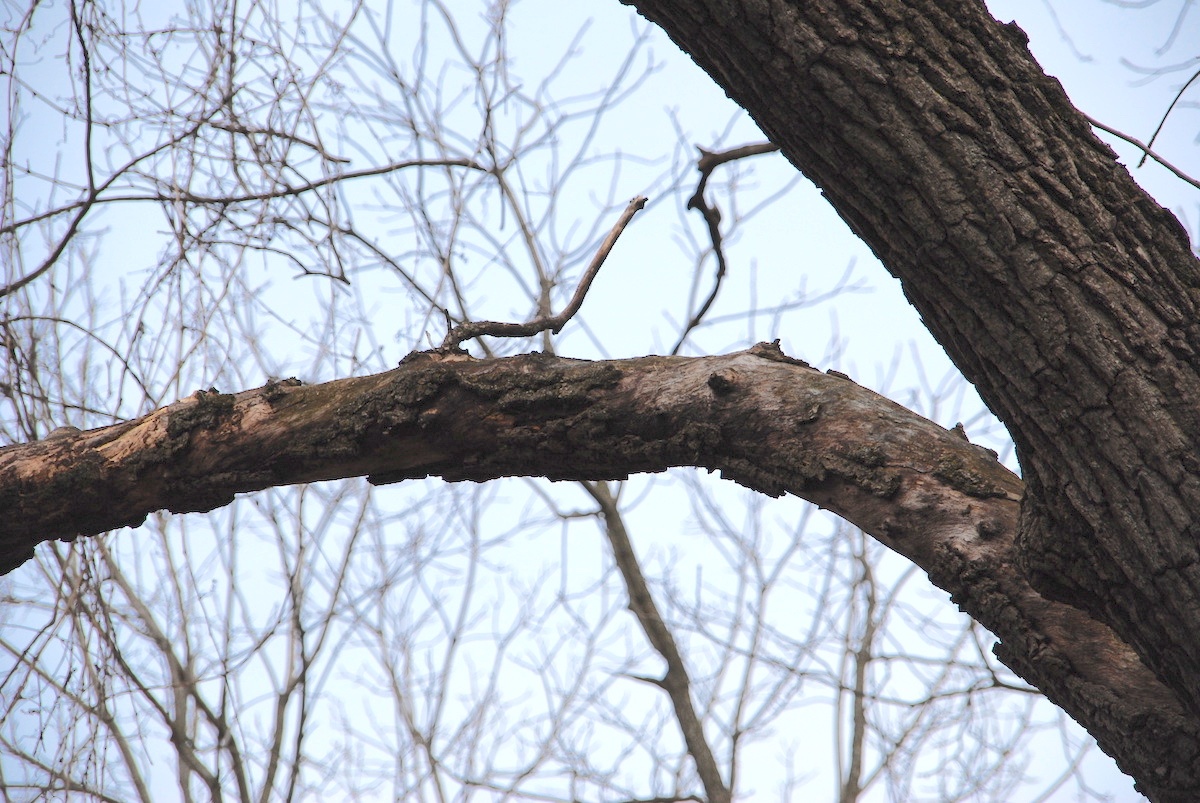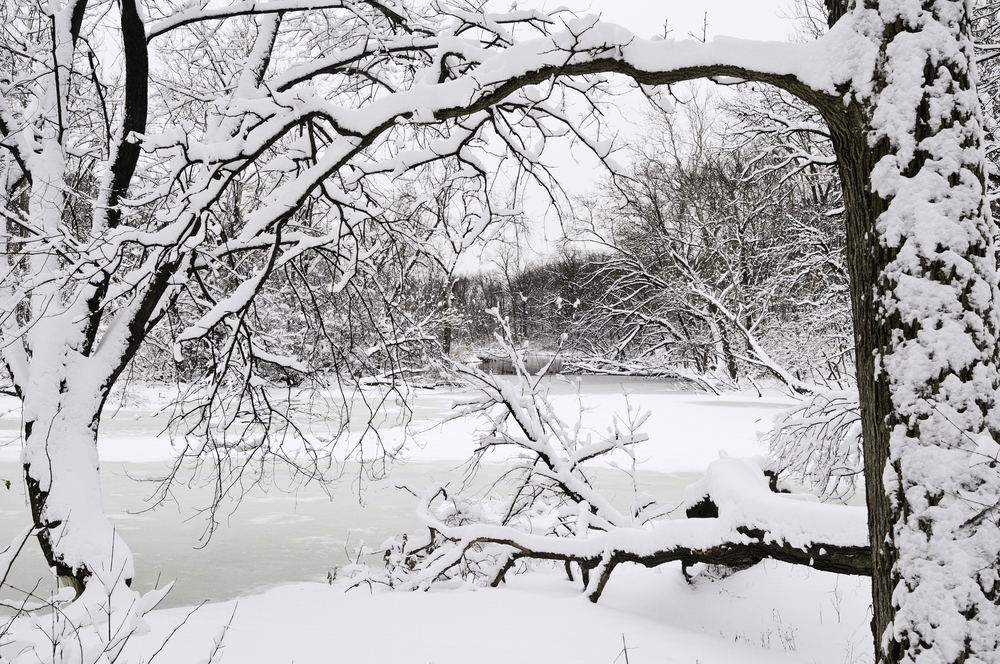Plants in your landscape have to endure all types of weather, including cold and freezing temperatures. Some plants will be able to handle this better than others. Unfortunately, winter injury to trees and shrubs due to freezing temperatures, snow and ice build-up, and intense winds can be a real concern.
While some plants are hardy and can tolerate these harsh conditions, others will need some TLC and protection.
In this article, we’ll dive into what you should know about preventing winter plant damage as well as signs that your landscape has already endured it. We’ll also help you tell the difference between damage and dormancy, as this can get confusing come spring.
Winter Plant Dormancy
Have you ever wondered how many of the plants in your landscape are able to withstand the winter and come back every spring? The answer is dormancy.

Similar to how some animals go into hibernation during the harsh winter, dormancy in plants is a mechanism of protection. Triggered by changes in the sun patterns and the colder temperatures, winter plant dormancy results in slowed photosynthesis and respiration. This stops growing from occurring.
In other words, during dormancy, plants are putting all of their energy into survival as opposed to growth.
During dormancy, plants store carbohydrates and nutrients within their roots, which provides the sustenance they need to hang on…and then helps to initiate growth come spring.
This is plant biology at work and it’s a fascinating process!
Early Frost: When Winter Plant Damage Occurs
While the cold is not going to harm a plant that has entered a state of dormancy, the trouble is when those sudden, unexpected early frosts occur at a time when plants are still actively growing and blooming.
An early frost can lead to cold damage on plants.
Cold damage typically causes some of the following symptoms:
- Black or brown leaves
- Wilting or drooping foliage
- “Burn-like” spots
Winter plant damage can also occur during unseasonable warm periods in the midst of the winter. This can cause your plants to come out of their dormant state too early, only to then be harmed by the resuming cold.
This is one of the reasons why you might want to cover plants with sheets or blankets if an early frost is coming. Pay attention to the weather during the fringe periods (the season between fall and winter…as well as between winter and spring).
Temporary greenhouses can even be constructed with wood framing and frost fabric if you’re particularly concerned about certain shrubs in your landscape. Though we sometimes see homeowners just wrap the trunk of a tree or shrub, sensitive plant material should be covered entirely.
If you notice that your plant has experienced frost damage, do not trim it back yet as you could cause further harm.
As we mentioned, cold damage on plants usually shows up as discoloration, like black or brown leaves and you might be very tempted to trim that off. But those cold-damaged areas are actually acting as a defense mechanism for your plant.

Those areas are almost like a shield for the rest of the plant now. Removing that “shield” will expose the still-living parts of your plant to frost. Trimming off frost damage also stimulates new growth which could also end up being injured.
Instead, wait it out.
We know that you might be anxious to know whether your frost-damaged plants will come back. Most of the time, they will. Wait it out and give it some time.
Winter Plant Dormancy or Winter Death?
As spring rolls around and you’re taking an assessment of your landscape, you might not be entirely sure which plants are dormant and which have experienced severe frost damage and have actually died.
One of the key things that we always stress to homeowners is to be patient.
It can be a slow process for some plants to come out of winter plant dormancy.
Further confusing things is the fact that different plants have different timetables before the warmth of spring will awaken them. Just because some plants are already greening up does not mean the “late sleepers” won’t come around.
Some of this is due to the fact that different plants have different sunlight requirements. Those that can thrive on less sunlight may be more likely to emerge earlier on. But there are other factors at play including moisture levels, soil conditions, and the overall state of the weather.
While we always recommend giving it some time, there are a couple of ways that you can try and determine whether a plant is dead or simply still in a state of dormancy.
Try the scratch test: Give a branch of the tree or shrub a light scratch with your fingernail or knife. By doing so, you are checking on the cambium layer. Is it fleshy and green inside? If so, it’s definitely alive! However, if it is brittle and brown, this is not living tissue. Keep in mind that a dead branch does not mean the entire tree or shrub has died. But that section is dead and will need to be pruned away. If all of the branches are like this, the tree or shrub has died.

Take a look at the roots: This “test” is a bit more precarious as you really don’t want to disturb a plant’s roots too much. But if you are feeling particularly concerned that a plant may have died, you can dig it up and take a look at the roots.
As we mentioned, during a period of dormancy in plants, the roots are still alive and healthy. If you do a little digging and see that the roots look fine, you just need to give your plant more time to wake up. But if you find they are dry and brittle, your suspicions that the plant has died were probably right.
Other Winter Injury to Trees and Shrubs
Of course, it’s not just frost and cold damage that can lead to trouble. Keep in mind that plants can experience other damage during the winter months that might cause them to die.
Winter injury to trees and shrubs can also occur from salt and chemical damage (used in deicing products) as well as plow damage. These types of injuries might not be recoverable.
Winter storms can also cause winter injury to trees and shrubs.

When snow and ice pile up on trees and shrubs, it can cause them to fail. Similarly, high winds could uproot certain plants or cause a structurally weak limb to fall.
It’s important that you take steps to prevent winter plant damage whenever possible.
Pruning can make a huge difference in preventing winter injury to trees and shrubs. Taking some extra care with your snow and ice removal approach is also important.
Avoiding Winter Plant Damage
At Joshua Tree Experts, we want to help you protect your landscape no matter what the season. That is why we’re always available to provide expert advice to help set you up for success.
Caring for a landscape can be stressful if you don’t feel like you have all the answers. But you don’t have to do it on your own. When you partner with us, we’re here to be your guides.
This should help give you peace of mind that you’re in good hands.
If you’re interested in having your trees inspected to gain some peace of mind, contact us for a free consultation or give us a call at 610-365-4858 so we can answer your questions.
Image Source | snow covered shrub, tree in winter




